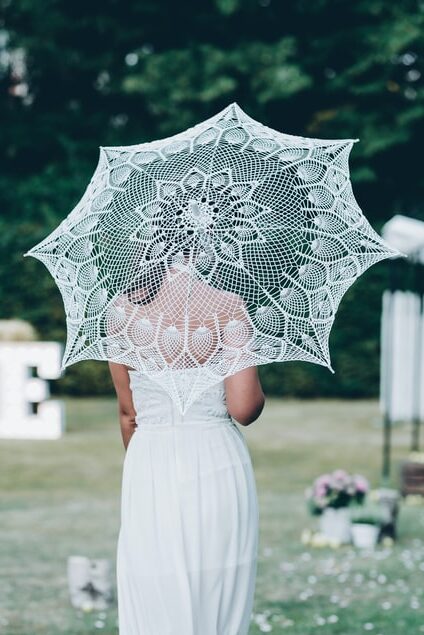I come across this question all the time. The answer is both yes and no. Irish crochet is a type of Irish Lace. It is one of the 7 types of Irish Lace, according to Pallisner. She was a leading authority on lace types and productions across Europe back in 1865 when her book the History of Lace was first published. Irish Crochet first sprang up sometime around mid-to-late 1840s and boomed as a cottage industry in Ireland largely due to the Great Famine.
A Little Background
There is some debate on whether the official origin was in fact in Ireland or if it was inspired and adapted from outside sources, and who exactly was the creator of Irish Crochet. Still, there is no denying that Ireland is where it exploded and therefore, it carries its namesake. It’s appearance is quite distinct from crochet in general, although that is more obvious today than it was then. Modern crochet artisans understand that Irish Crochet usually means the use of thread over yarn, and that perhaps there is some level of freeform in its creation.
Living Off Potatoes
In Ireland during the Great Famine, there was an overwhelming percentage of the population suffering from famine and disease due to a combination of harsh winters and multiple, consecutive potato crop failures from 1845-1849. Potatoes were the staple crop that over half of the Irish population depended almost exclusively on the potato for their nutritional needs. This combination of events caused several families to not have means for nourishment nor livelihood. Many families leaned into other methods of finding out how to make an income to provide for nourishment.
During this time, there was various efforts to help the nation find other ways to make a living. One of the ways was teaching the skill of lace-making to anyone willing to learn through schools and convents. Afterwards, the lacemakers could then sell their handmade effects to middlemen transactions who would export the lace to areas of high demand across Europe. Lace was exceptionally popular in fashion and dress during this time that entire families would learn the skill to increase the quantity that could be produced at a time.
Quality of Irish Crochet
After the introduction of the crochet hook as a method to make lace, handmade lace production increased drastically. The reasons were simply an issue of time and difficulty of skill when compared to the standard needlepoint making methods of other popular laces. Crochet-based lace took a fraction of the time that needlepoint-based laces did. It was also far easier to learn and teach, and therefore it was a quicker turnaround to becoming a skilled handmade lacemaker.
Oddly enough, these difference caused some dissent among lace experts at the time as well. Pallisner purposely printed into her book that she believed that Irish Crochet was an inferior type of lace. She believed that it was “spoilt because it is made with a woolly cotton thread” (Pallisner, 1865/1984). Conversely, another pair of lace experts, Lefébure and Cole (1889) who published their own book (Embroidery and Lace: Their Manufacture and History From The Remotest Antiquity to the Present Day) completely disagreed. They saw the sophisticated results that came from something that required essentially no financial burden on the makers, taking admirable notes for their book.
Other Irish Laces
As mentioned earlier, crochet is considered a type of Irish Lace. Some other Irish Laces that exist are the Carrickmacross, Limerick, and Youghal laces. Carrickmacross is considered the oldest of the Irish Laces and is an embroidered appliqué style of lace. Limerick lace is technically only embroidery based on a machine-made net. Tambour embroidery is thought to be the immediate predecessor of crochet – as it uses hooks to maneuver the thread in and out of the loop. Tambour work was known to have traveled and been introduced from the East (China, Persia, India and Turkey). Youghal lace, a needlepoint that does a decent job to mimic Venetian flat point lace but is easily identified by the quality of the thread chosen.
TL;DR The Bottom Line
Bottom line, while Irish Crochet is in fact Irish Lace, Irish Lace may not always refer to Irish Crochet. Sneaky, sneaky, Irish Crochet.
References
- Pallisner, B. (1984). History of lace (4th ed.) (M. Jourdain & A. Dryden, Eds.). New York: Dover. (Reprinted from History of lace (4th ed.) (M. Jourdain & A. Dryden, Eds.) by B. Pallisner, 1911, New York: Scribner) (Original work published 1865).

